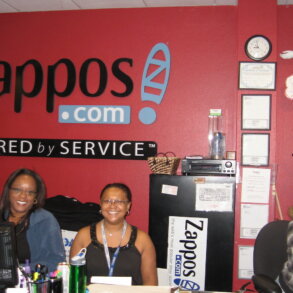By Chris Cowan and originally published on holacracy.org blog

Why do some people collapse in the face of challenge while others persist? Why do some people feel intimidated when others feel inspired? There are almost too many reasons to consider, but we need to consider them because adopting the Holacracy practice is hard. And it’s particularly hard on people.
Working in a Holacracy-powered organization is inherently “psychoactive,” meaning it inevitably pushes against our assumptions no matter how advanced or mature those assumptions already are.
So, to practice Holacracy effectively, you need to understand people. Their emotions and their mindsets. And most importantly, you need a shared language for talking about those things.
Specifically, two terms worth adding to your vocabulary are “growth mindset” and “fixed mindset.” They describe two profoundly different responses to challenge. And I’m picking sides, because I’m suggesting organizations that succeed in adopting Holacracy do so because they support a growth mindset.
Later on, I’ve got some concrete tips for how Holacracy-powered organizations can create and nurture a growth mindset. But first, some research.

In the 1970s, Stanford psychologist Carol Dweck found that different children had surprisingly different approaches to solving problems. She monitored children’s reactions as they were given a series of progressively difficult math problems. As the level of difficulty increased, each child was asked if they would like a harder or easier problem.
Dweck found that those children who chose the harder problem reported they enjoyed the challenge. They remained engaged and confident, because their goal was to learn. Those who chose the easier problem were more likely value the final output, i.e., getting the correct answer. Their goal was to perform.
As Dweck explored why children made these different choices, she identified two types of mindset or orientation; a “fixed mindset,” in which students believe their level of intelligence and capacities to be unchanging, and a “growth mindset,” in which students believe their talents and abilities can be developed through hard work and persistence.
While the fixed mindset children became disinterested or upset with unfamiliar problems because they feared looking foolish, the growth mindset children didn’t associate performance with their own value, and were therefore much less afraid to try and fail.
But here’s where it gets interesting: The studies also showed that children with the growth mindset took more risks, learned more, and ultimately performed better. Yes, performed better.
Meaning that, over time, the children who were NOT focused on results actually performed better.
Now, if you’ve ever learned anything (and I hope you have), then you’re probably not completely surprised by this. Usually the only way to get good at something is to start by being bad at something.
And when it comes to making a transition to a new way of working like Holacracy, the same principle applies. People who approach it with a growth mindset are more likely to be successful and to further inspire a culture of experimentation and self-management.
Of course, fixed mindset has its place, and there are contexts in which it is quite appropriate. Yet, if your organization is doing “knowledge work,” then it may be increasingly ill-suited to mechanistic models of motivation and performance.
Too often organizations find themselves (without conscious intention) engendering a performance-oriented, results-now culture that sacrifices long-term capacity-building for short-term gain. And in systems that can’t effectively process any tension felt by any person at any time, it’s a completely rational strategy to prevent mistakes from happening in the first place.

So, how is your organization currently doing? You don’t need a sophisticated survey to find out. You alone are a perfectly valid data point. Your answers to these questions needn’t be a shared opinion.
- How comfortable do you feel raising an objection in a governance meeting?
- How comfortable are you sharing constructive feedback with co-workers?
- How often do you ask questions when you don’t understand something?
- How comfortable do you feel saying “no check,” or “no updates” during a tactical meeting?
- How often does someone publicly admit a mistake they made?
These unscientific questions should give you at least an intuitive sense of how you’re approaching your work and, more interestingly, how your work approaches you. So, if you want your Holacracy practice to be grounded in a growth mindset, here are two concrete things you can do.
#1: Share Vulnerable Check-ins
The rules for the Check-in and Closing Round don’t limit you to only sharing what’s on your mind at the moment. You can provide any type of comment you want. So, get creative. This is one of the most powerful opportunities to set a learning context for yourself and others.
If you’re facilitating, try suggesting any of the following to the circle:
- “For Check-in, share something you did well and something you failed miserably at last week…”
- “For Check-in, share something new you tried or a risk you took…”
- “For Check-in, share something you’d like to experiment with during this meeting…”
And if you’re not facilitating, so what? Use your check-in to answer these questions anyway or share something else vulnerable and real. You’ll likely find you’ve “broken a vulnerability sweat” that serves you for the remainder of the meeting. Plus, others will be grateful you disrupted the monotonous repetition of “Checked-in” and “Here” that most settle for.
#2: Encourage Objections
For many, the Objection Round of the Governance meeting is awkward and underutilized. The discomfort usually comes from assuming objections are a form of personal criticism.
One of the most damaging things Holacracy practitioners do is create an “avoid objections” environment by trying to fix the proposal before the objection round.
It’s not uncommon for people to self-filter their objections rather than raising one and letting the process sort out its validity. Or for a proposer to feel pressured to amend his proposal in response to a critical reaction. Both of these habits move your circle away from a growth mindset. Instead, proactively encourage objections.
Don’t just make objections OK. Make them a welcomed part of the process:
- If you’re facilitating, ask each participant, “Would you like to try an objection…yes or no?” And if they say, “Well, I’m not sure,” then encourage them to raise it and determine its validity together.
- If you’re presenting your proposal say, “Here’s a proposal that would solve my tension, but if you have an objection, please raise it.” Make it clear you’re not going to take objections personally.
- Even if you’re just someone in the meeting, you can always use your reaction in the Reaction Round to say something like, “I like the proposal, but I hope others will raise objections if they have them, because we can fix it together in integration.”

Carol Dweck uncovered the interesting paradox that when we focus on performance to the exclusion of learning, it’s more likely our results will diminish. But if we instead define goals that measure what was explored, learned, or risked, we are more likely to improve our performance. It’s a cherry-picked and partial rendering of her conclusion, but a valuable insight none the less.
And if this isn’t shocking, hopefully it’s at least a good reminder.
Republished with permission of the author.
Featured Image/graphic link added by Enlivening Edge Magazine




